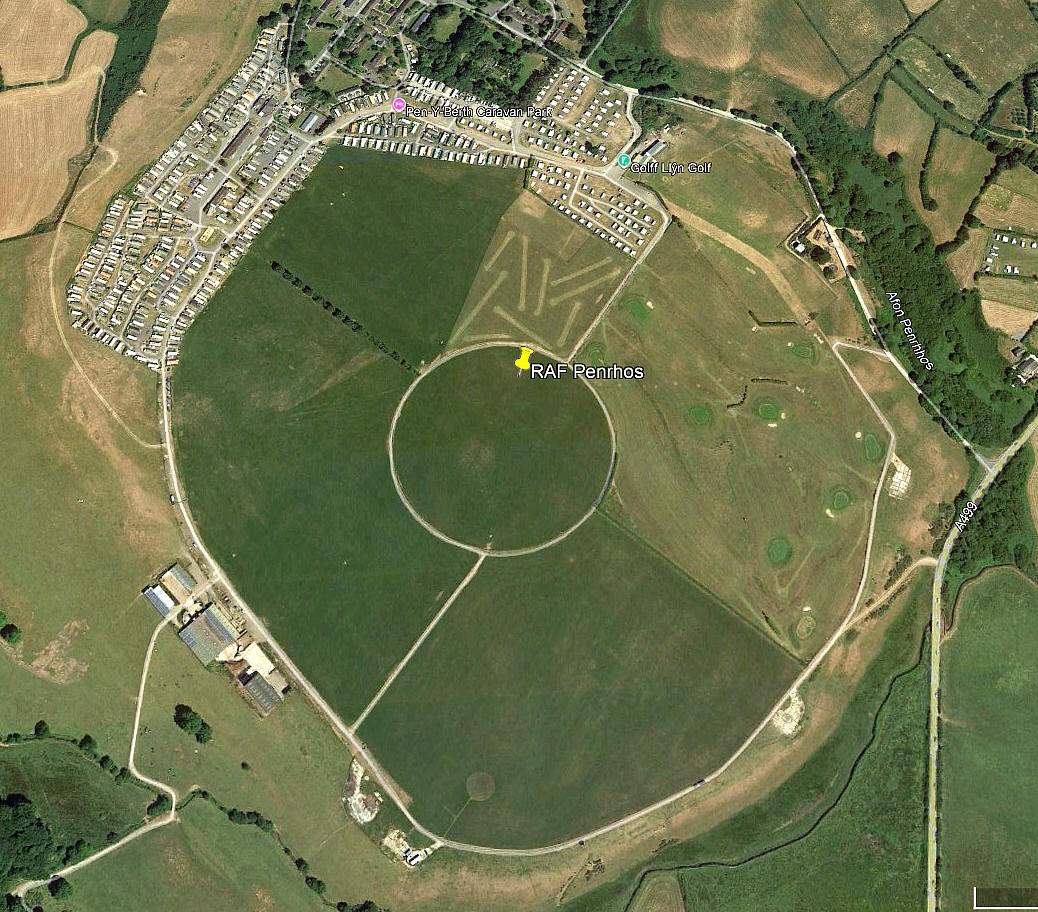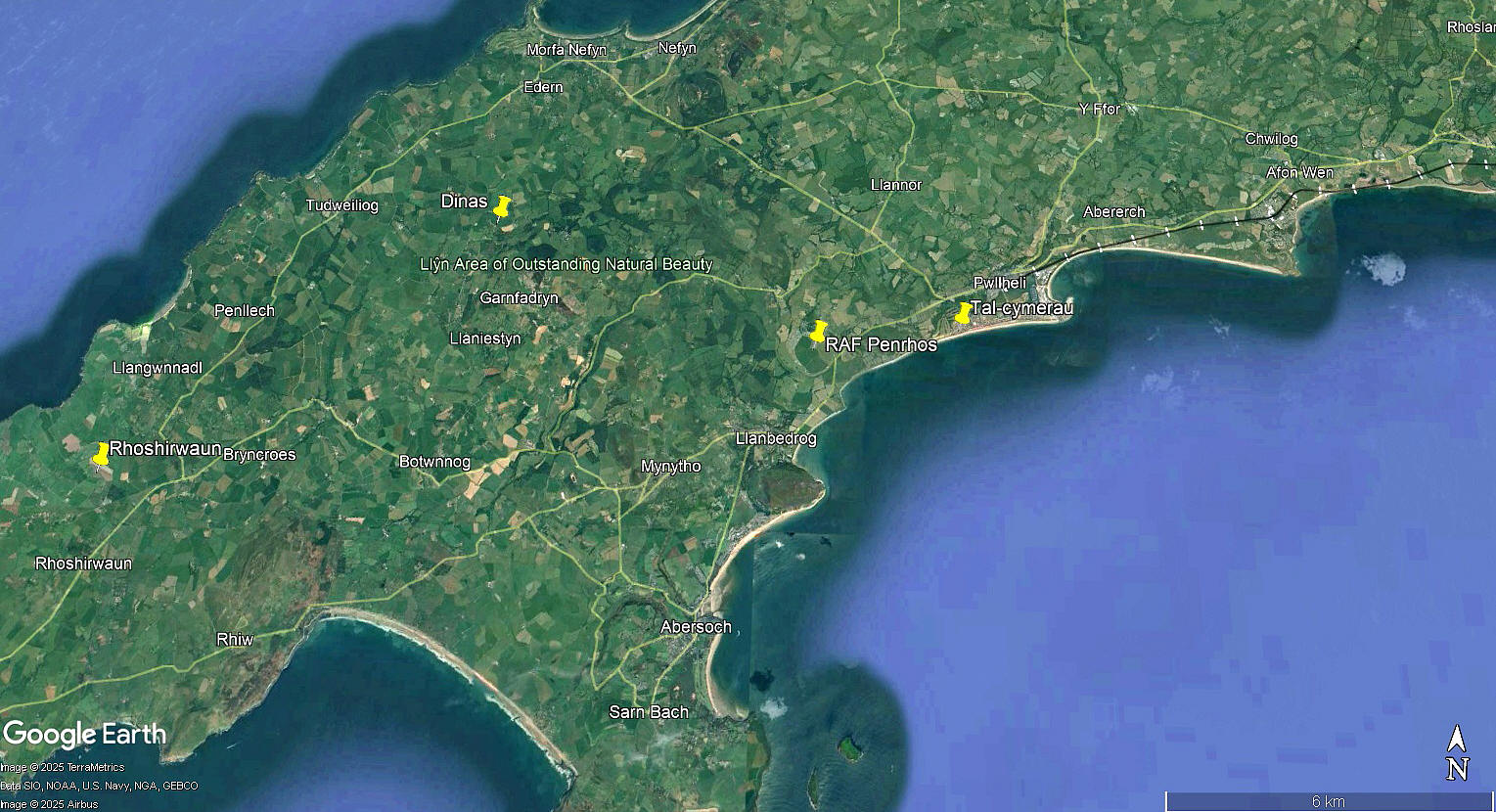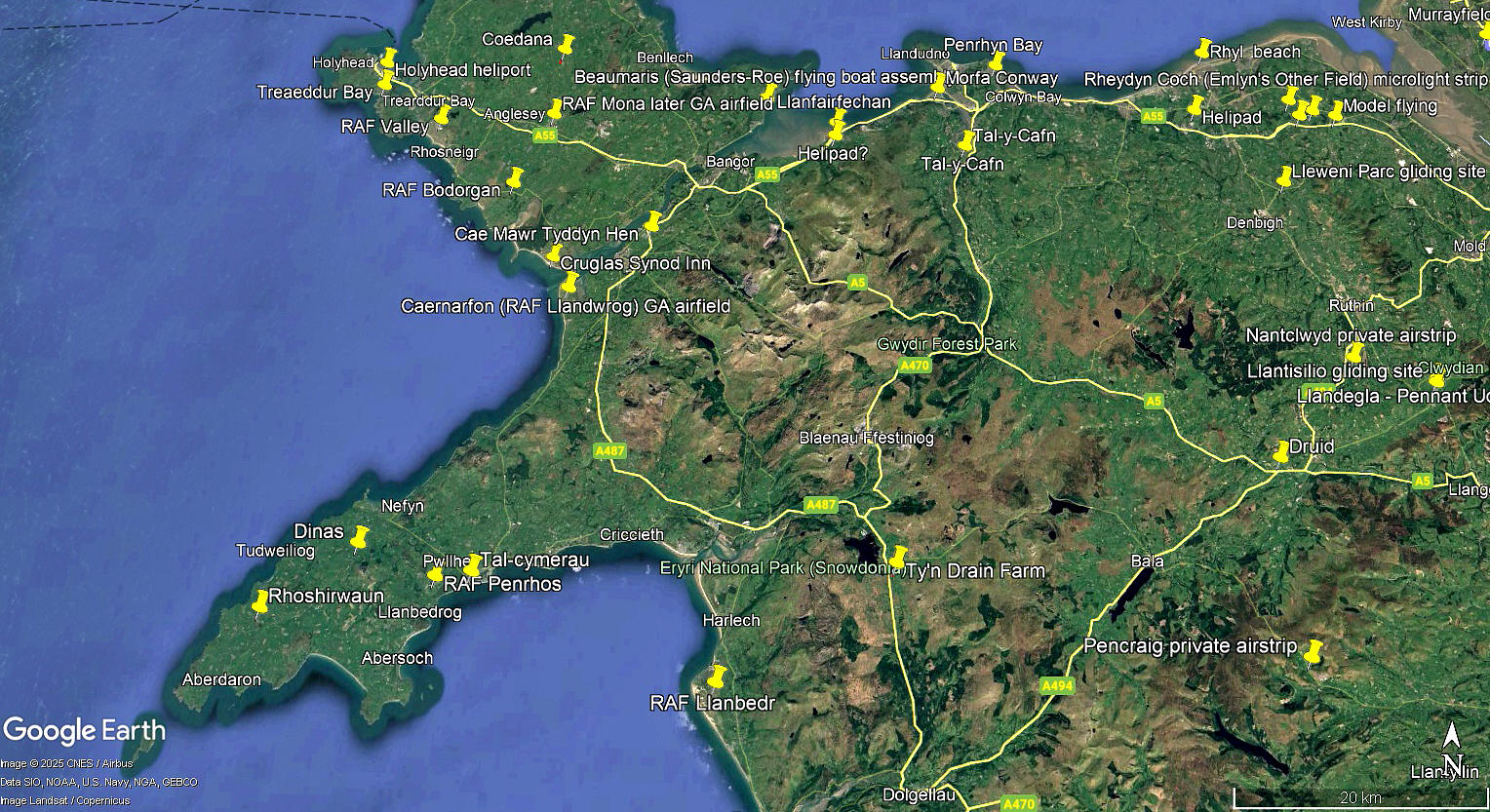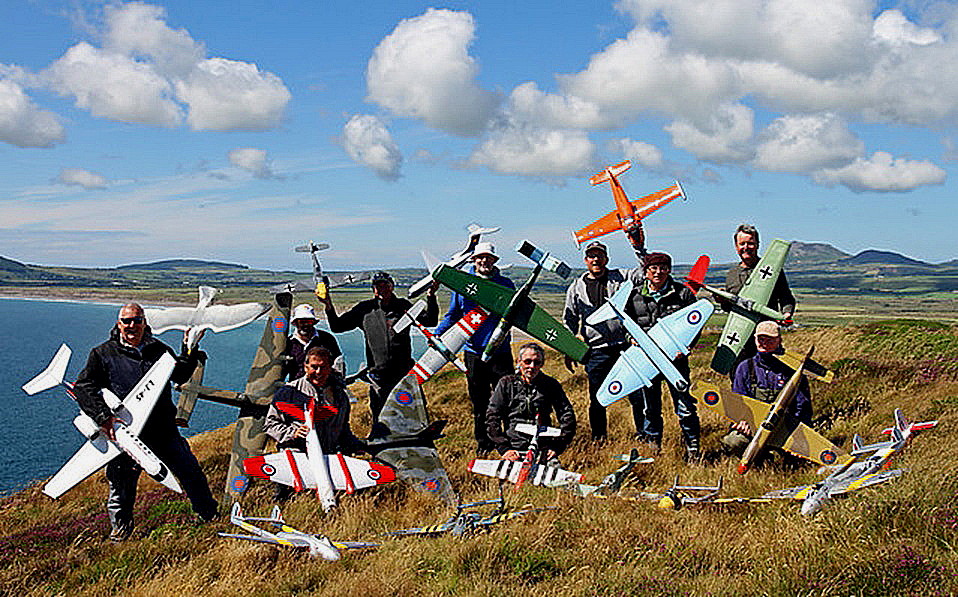Penrhos
PENRHOS: Military aerodrome later private airfield
Note: These three pictures are from my Google Earth © derived database. Please note that not by any means are all the listings in this 'Guide' pinned in my database.
Military users: Pre 1940: 10 FTS (Hawker Audaxes & Hinds)
WW2: RAF Flying Training Command 25 Group
9 AFU & AOS (Avro Ansons & Hawker Henleys)
1 AACU (Westland Wallaces)
312 Czech Sqdn (Hawker Hurricanes)
611 Sqdn (Vickers-Supermarine Spitfires)
Charter / air taxi: 1950s Airmotive?
Location: NW of A499, W of Penrhos, 2nm SW of Pwllheli
Period of operation: Military: 1937 to 1946 Civil: 1970s only?
Runways:
Before WW2: It would appear that three grass runways of exceptional width were laid out at this airfield and their directions are purely a guess due to apparently nonsensical info. Could anybody be kind enough to advise?
07/25 701x114 grass 14/32 834x114 grass 18/36 797x114 grass
But, these runways were marked on AMWD maps of the airfield
WW2: NE/SW 786 grass NW/SE 640 grass E/W 640 grass
NOTES: There are many interesting aspects surrounding the establishment of this airfield going back to 1935 when the project was first mooted. A very large section of Welsh people (especially in North Wales) have never allied themselves over centuries to being part of the United Kingdom concept and have often actively fought against this essentially English concept. The history regarding this airfield provides evidence of considerable local resistance which, (ironically?), in turn came to the attention of the German High Command who ordered several attacks as they obviously considered it must be very important - which it wasn’t!
STILL A CONTROVERSY
In certain quarters it is claimed that the Irish Republic in their relatively new neutral ‘Free State’ actively sided with the Nazi regime and provisioned their U-boats etc in WW2. However, under 'free trade' agreements they could I suppose, have been equally happy to provision Royal Navy vessels? It must be remembered that in Sweden and Switzerland, also 'neutral' countries - they both had a crucial role in supplying components essential to the war effort. Except that Switzerland only supported the Nazi regime.
The position of the majority of Welsh people in mid-Wales and North Wales still remains questionable at best. My father who was RAF aircrew based for training in mid-Wales in the early part of WW2 made no bones about it. Welsh farmers for example would open fire on them with shotguns when they were trying to retrieve the human remains from crash sites. At the airfield the locals were initially friendly when being paid to perform various duties but their attitudes changed immediately when a Germam bomber made an attack and bombed the airfield. This is not to say that they then sided with the Nazi German government, but they certainly withdrew any support for the war effort.
Although some people try to make much of the support from the Irish government towards the Nazi regime it is often claimed today that this ‘support’ is much overstated. Indeed, having gained independence it was very plain that a great many Irish people depended on working in the UK and they formed the backbone of labourers building our airfields and invariably lived in squalid conditions. But for them I suppose it was a question of survival and the conditions at home were probably worse? Why else did they endure such deprivations?
NEUTRALITY
As alluded to above, the concept of neutrality is a very interesting subject. For example it is, according to some experts on the subject, without any doubt that denied the wholehearted support of Sweden and Switzerland supplying the Nazi war machine WW2 would have ended probably a year and possibly even two years earlier! But I suppose, it is always in the interests of a neutral country to support the victor, and until late in 1942 the money was definitely on the Nazi regime.
OTHER ASPECTS
There is another important and interesting aspect too - what made up a typical RAF aerodrome of that period based in such a remote location? Apart from the obvious accommodation and administration problems to be addressed, here are a few reminders of some of essential activities related to a active airfield of this period: Blacksmith, instrument repair shop, main stores, maintenance workshops, oil and paint stores, parachute & dinghy store, radiator test plant, welding shop, fabric store etc, etc. All of which had to be largely self-sufficient to some degree and supplied. Surely a logistical nightmare given the transport infrastructure - or lack of?
Then of course you have basic human needs. A water and food supply, clothing and heating etc plus sewage disposal. I now think that the efforts expended behind the ‘front line’ is a fascinating subject. How did they do it?
SOMETHING NICE TO LEARN?
In the Omnibus edition of British Airfields 1939-1945 by Steve Willis and Barry Hollis which formed a big part of my early research into WW2 military aerodromes, this aerodrome was listed as being a caravan site. How very nice. It made a welcome change from agriculture, housing, industry, a prison or yet another Radio Research Station being listed as uses for old wartime aerodromes. The poor picture (above) certainly confirms this, but, it also appears the landing area was largely untouched.
SPOTTERS NOTES
In 1977 I was intrigued to discover, it appears that the Jodel D.120 G-BCGL and SOCATA Rallye 100ST G-BCUL were based here.
Plus, in 2023, Mr Graham Frost, a great friend of this 'Guide', found that in his records during a family holiday in west, or as he calls it, "wet" Wales, he noted G-ATVS here in 1975. A quick delve reveals that the Piper PA-28-180 Cherokee, (ex N9014J), was registered to both Mr J E Dyson and Mr T E O'Connor from 24.12.75 to 15.11.76. Both having their addresses in this area.
There is nothing unusual about this. Obviously the circumstances are not known (?) but it often happens that a visiting aircraft may well have attracted the interest of local pilots. Would it be coming up for sale? Etc, etc.
MORE NEWS
It now appears that in recent years, (as in 2025), this location has been used by the Lleyn Model Aero Club.
We'd love to hear from you, so please scroll down to leave a comment!
Leave a comment ...
Copyright (c) UK Airfield Guide



















